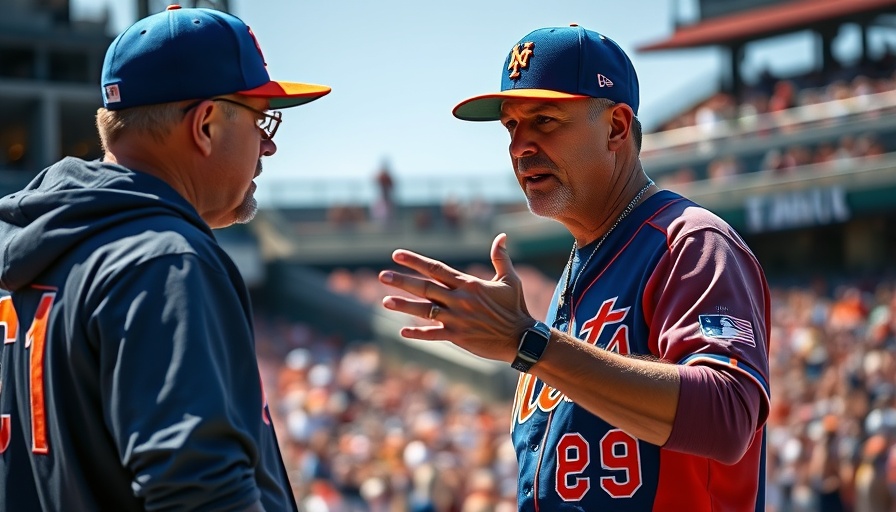
A Smart Approach: Mets' Cautious Path to Success
The New York Mets have made headlines yet again by refusing to overpay for a marquee starting pitcher, a decision that has puzzled fans and analysts alike. Following the recent trade deadline, which left their rotation seemingly vulnerable, Mets' president of baseball operations David Stearns addressed the team's choices—notably, opting to strengthen their bullpen instead.
Depth Over Desperation: Mets' Strategy Explained
Despite the clear need for a more reliable starting ace, Stearns explained his rationale, stating, “We engaged with teams but determined the costs were too high.” The Mets already acquired three high-caliber relievers, possibly suggesting they believe they can find internal solutions to their starting woes. Promising prospects like Brandon Sproat and Nolan McLean loom on the horizon, tempting fans to wonder if the Mets might give them their shot when the timing is right.
Financial Prudence in High-Stakes Baseball
Stearns’ careful evaluation serves as a reminder of the Mets’ financial strategy. In an era when many teams opt to go all-in during pivotal moments, the Mets appear to be weighing the long-term impact of their decisions. By avoiding exorbitant trades for pitchers like All-Star MacKenzie Gore, Stearns prioritizes building a resilient and deep roster over fragile, flashy trades.
History Lessons: When Overpaying Backfires
Baseball fans know the game isn't just played on the field; it’s also played in the front office. Teams like the Washington Nationals, who acquired star players for steep prices—only to see those trades fizzle—serve as cautionary tales. The Mets’ choice to focus on savvy acquisitions over knee-jerk reactions not only reinforces their unique position in the league but also invites a broader discussion about the evolving dynamics of player trades in Major League Baseball.
Looking Forward: The Future of the Mets' Rotation
While the recent deadline may not have secured a top-tier ace, Mets fans can still hold onto hope. As Stearns hinted at potential promotions, there’s a chance that homegrown talent may soon energize the rotation. The development of young pitchers within the organization could provide both immediate relief and long-term success without the risks associated with expensive trades.
The Fan Connection: What This Means for Mets Supporters
For die-hard Mets fans, the decision to avoid overpaying for a pitcher is a double-edged sword. On the one hand, they may feel frustrated at the lack of immediate upgrades; on the other, there’s hope in Stearns’ vision for a sustainable, competitive future. Fans who appreciate strategic foresight might find comfort in the possibility of younger players realizing their potential, ensuring the team can contend without compromising future flexibility.
A Call to Resilience
In a game defined by highs and lows, the Mets’ decision to stay the course shows a commitment to resilience. Baseball is a marathon, and sometimes the best strategies are the ones that optimize growth over immediate thrills. For now, it may be wise for fans to trust the process as they anticipate how the team’s pitching landscape will evolve in the coming months.
 Add Row
Add Row  Add
Add 




Write A Comment